Captured German infantry guns in service in the Red Army
Soviet troops began using captured guns and mortars in July 1941. But in the first months of the war, their use was episodic and non-systemic. Taking into account that the Red Army was sorely lacking in propulsion means, and there was nowhere to replenish the stock of shells, captured artillery systems often released all the available ammunition in one battle, after which they were destroyed or thrown.
The effectiveness of the use of German captured artillery weapons at the first stage was very low. The training in calculations left much to be desired. In addition, there were no firing tables and operating instructions translated into Russian.
During the Soviet counterattacks in late 1941 - early 1942, it was possible to capture several hundred German guns and mortars suitable for further use, as well as a stock of ammunition for them.
The organized use of captured artillery began in mid-1942, when artillery and mortar batteries were formed in the Red Army, equipped with infantry 75-150-mm cannons, 37-47-mm anti-tank guns, and 81-mm mortars.
In the first place in terms of the number of barrels and the intensity of use was precisely anti-tank and regimental artillery, as well as mortars. Artillery operating on the front line and coming into direct contact with the enemy always suffered greater losses than artillery firing from closed positions. In this regard, in the artillery units and subdivisions of the Red Army leading the fighting, there was a regular lack of materiel. Moreover, even in 1944, when the industry was already completely rebuilt on a war footing and the volume of production of the main types of weapons increased sharply.
After the Red Army began to achieve more and more successes on the battlefield, the number of artillery batteries equipped with captured guns increased. The artillery units of the Red Army were receiving more and more not only infantry and anti-tank guns, but also powerful 105-150-mm guns.
German artillery systems were used in hostilities until the surrender of Germany. In the post-war period, they were in storage for some time. Subsequently, most of them were cut into metal, and the most modern captured weapons, which had a sufficient resource, were transferred to the allies.
This article will focus on the German infantry guns used in the regimental echelon, designed to provide fire support to infantry units.
Light infantry 75 mm gun 7,5 cm le.IG.18
From the first to the last days of the war, the 75 mm 7,5 cm le.IG.18 gun was actively used in the German army. The light cannon, created by Rheinmetall-Borsig AG in 1927 for direct artillery support for infantry, is considered one of the best in its class.
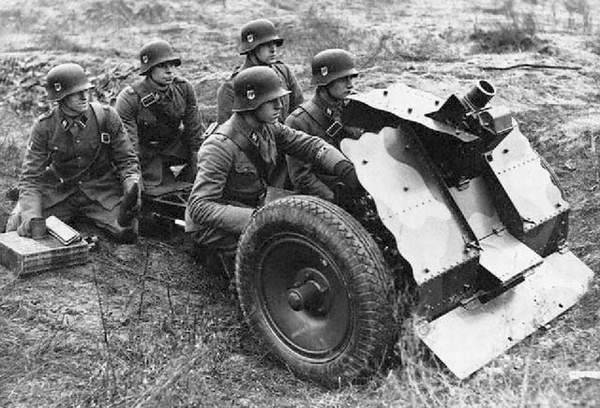
Crew of a light infantry 75-mm gun 7,5 cm le.IG.18 in a firing position
First of all, the gun was intended to defeat openly located and sheltered infantry, firing points, field artillery and enemy mortars. If necessary, a 75-mm infantry cannon could fight enemy armored vehicles.
Unlike guns of a similar purpose that were available in the armies of other countries, the German 75-mm light infantry gun had a very large maximum elevation angle (from -10 to + 75 °) and a separate-case loading with various weights of a propellant charge.
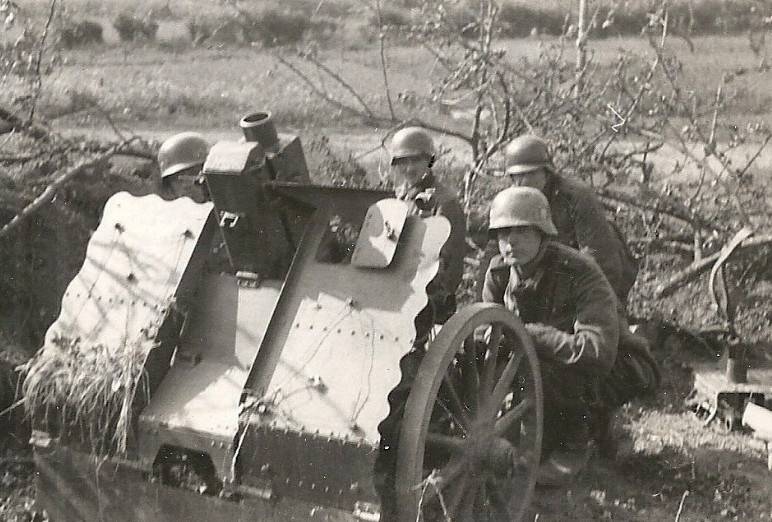
Light infantry 75-mm gun 7,5 cm le.IG.18 with a maximum elevation of the barrel
As a result, it was possible to choose the trajectory of the flight of the projectile and defeat visually unobservable targets that took refuge in the folds of the terrain and on the reverse slopes of the hills. As a result, the gun had high efficiency and flexibility in use. In fact, it combined the properties of a regimental cannon and a light howitzer.
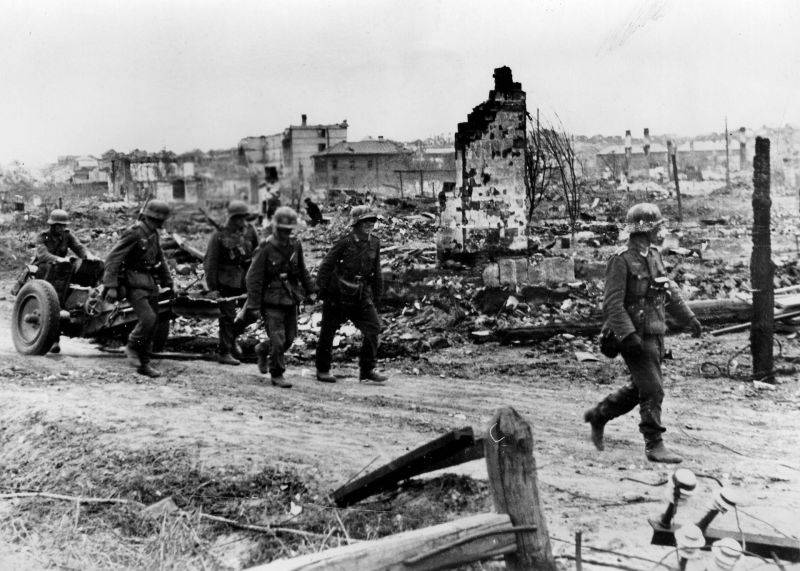
The weight of the gun in the firing position was 400 kg, thanks to which a crew of six people could roll it freely enough over short distances. Special straps were used if necessary. Weight in the stowed position with the front end - 1560 kg.
The first version, which entered the army in 1932, was intended for horse-drawn transportation and had wooden wheels with a metal rim and switchable suspension.
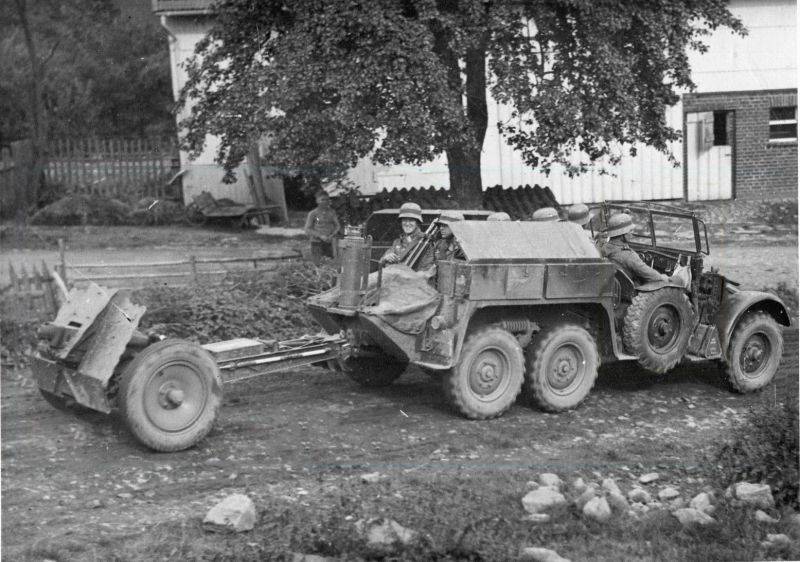
In 1937, an improved modification with metal disc wheels equipped with pneumatic tires went into the series. In this case, there was the possibility of towing by motor transport at a speed of up to 50 km / h.
With a barrel length of 885 mm (11,8 calibers), the initial velocity of a 7,5 cm Igr.18 high-explosive fragmentation projectile weighing 6 kg, depending on the propellant charge, could vary from 92 to 212 m / s. The tabular firing range at the optimal elevation of the barrel of fire on charge No. 1 was 810 m, and on charge No. 5 - 3470 m. The rate of fire was 12 rds / min.
The ammunition consisted of two types of high-explosive fragmentation projectiles and two types of cumulative projectiles, as well as a target designation projectile. The 7,5 cm Igr.18 high-explosive fragmentation projectile was equipped with a charge of cast TNT weighing 700 g, in which, for better visibility of the rupture, there was a smoke-generating capsule with red phosphorus. Shell 7,5 cm Igr. 18 Al was distinguished by the fact that powdered aluminum was added to the composition of the bursting charge, and cast ammonal was used as a bursting charge (in addition to TNT).
A high-explosive fragmentation projectile could penetrate wood-earth field fortifications with a ceiling thickness of up to 1 m or a brick wall up to 25 cm thick.When a shell burst, the affected area by fragments was 12 m to the sides, 6 m forward and 3 m back. When a shell burst after a ricochet at a height of up to 10 m, the affected area was 15 m to the sides, 10 m forward and 5 m back.
The gun's ammunition did not contain caliber armor-piercing projectiles, but, as practice showed, firing high-explosive fragmentation projectiles on powder charge No. 5, which gave the maximum initial velocity, made it possible to penetrate armor 20-22 mm thick. Thus, at the minimum firing distance, the le.IG.18 cannon could fight against light armored vehicles.
To fight the more protected tanks intended cumulative shells 7,5 cm Igr. 38 and 7,5 cm Igr. 38HL / A s. However, the effective range of fire at an initial projectile speed of 260 m / s did not exceed 400 m. And at a distance of more than 800 m, the probability of hitting a moving tank tended to be zero.
The armor penetration of a cumulative projectile equipped with 530 g of TNT-RDX alloy was 85–90 mm along the normal. Taking into account the large angle of inclination of the frontal armor of the T-34 tank, this was not always enough. But even in the event of a penetration, the armor-piercing effect of the cumulative jet in most cases was weak. With a fair degree of probability, it was only possible to hit the thirty-four with a cumulative projectile on the side. In addition, the anti-tank capabilities of the le.IG.18 gun were reduced by the limited horizontal guidance sector (11 °), which made it difficult to fire at fast moving targets.
The projectile with a distance tube 7,5 cm Igr.Deut was intended to create a clearly visible landmark on the ground. And with the help of an expelling charge at a given point, he threw out 120 brick-colored cardboard circles and 100 red cardboard circles. There was also a projectile for a similar purpose with a smoke-generating composition.
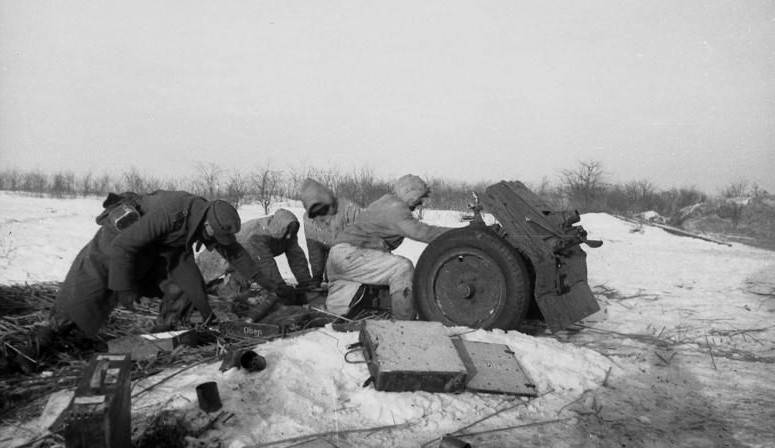
In the Wehrmacht and the SS troops, le.IG.18 guns performed the functions of regimental, and in some cases, battalion artillery. In the German infantry and motorized divisions, the state was supposed to have 20 light infantry guns.
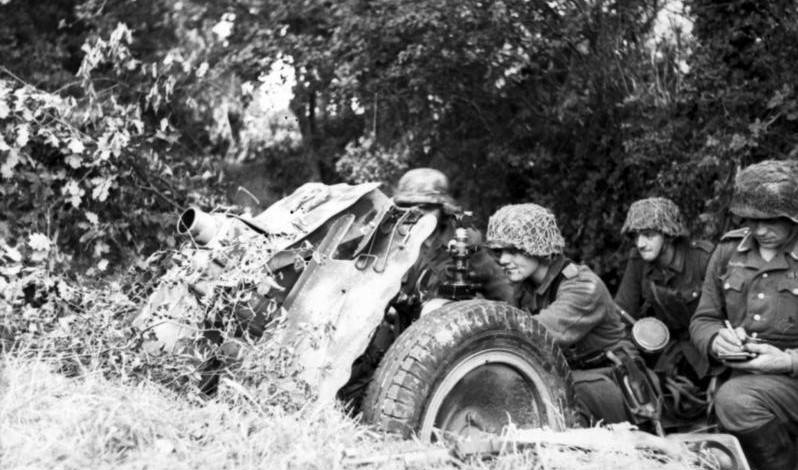
The 75 mm le.IG.18 cannons were very widely used during the Second World War. As of September 1, 1939, the Wehrmacht had 2933 light infantry guns and 3506 thousand rounds for them.
On June 1, 1941, the German armed forces had 4176 light infantry guns and 7956 thousand rounds for them. At the beginning of March 1945, the Germans had 2594 le.IG.18 units, which were actively used until the end of hostilities.
The light 75mm guns were used very extensively. In 1942, they used up 6200 thousand shots, in 1943 - 7796 thousand, in 1944 - 10 817 thousand, and in January - February 1945 - 1750 thousand shots.
Taking into account the fact that the 75 mm le.IG.18 cannons were often found in the battle formations of infantry units, their losses were very significant. For example, in the period from December 1, 1941 to February 28, 1942, 510 guns of this type were lost, and from October 1944 to February 1945 - 1131 guns. A significant part of the guns lost by the Germans went to the Red Army.
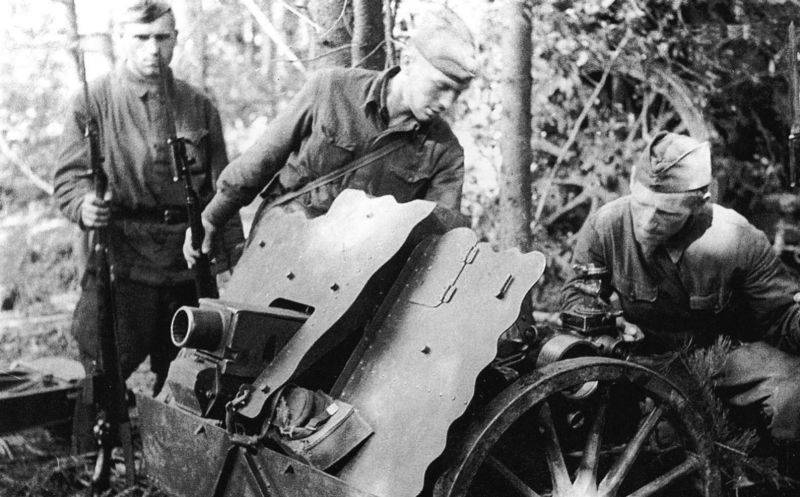
The first photographs of captured 75 mm le.IG.18 cannons date from August 1941. However, a significant number of such guns and ammunition for them was captured by the Red Army in late 1941 - early 1942.

The captured 7,5 cm le.IG.18 were used in the same way as the Soviet 76-mm regimental cannon of the 1927 model. Several hundred 75-mm guns of German production in 1942-1943. were used to form artillery batteries and divisions of 4–5 guns in rifle brigades, rifle, motorized rifle and cavalry regiments.
In the Red Army, captured 75-mm le.IG.18 predominantly fired with direct fire. This was due to the fact that for effective firing from closed positions, a good knowledge of artillery was required from the personnel. And mounted shooting was difficult to master by insufficiently trained personnel. Nevertheless, in 1943, GAU issued for the “75-mm German light infantry gun mod. 18 ”firing tables and operating instructions translated into Russian.
In total, our troops captured about 1000 serviceable 7,5 cm le.IG.18 guns. Some of them were subsequently transferred to the armed forces of friendly states.
For example, after the formation of the German Democratic Republic, 75-mm infantry guns were used in the process of training the barracks people's police, which later became the nucleus of the National People's Army of the GDR.
Soon after the victory over Nazi Germany, the Soviet leadership authorized the transfer of captured 7,5 cm le.IG.18 infantry cannons and ammunition to the Chinese communists waging an armed struggle against the Kuomintang.
Subsequently, several dozen of these weapons were used by Chinese people's volunteers during the hostilities in Korea. Due to its lower weight, the German-made 75-mm infantry gun was better suited for the specific conditions of the Korean Peninsula than the much heavier Soviet 76-mm regimental gun mod. 1943 g.
Infantry 75 mm gun 7,5 cm IG 42
On the whole, the light infantry gun 7,5 cm le.IG.18 was quite satisfactory for the German command. However, the weapon, developed in the late 1920s, no longer fully met modern requirements. It was highly desirable to increase the sector of shelling in the horizontal plane, to increase the combat rate of fire and the range of a direct shot.
In 1941, the designers of the Krupp company presented the first prototype of the 75-mm regimental gun, later designated 7,5 cm IG 42 (German 7,5 cm Infanteriegeschütz 42). However, at that time, the Wehrmacht command believed that the war could be won by the existing weapons... And did not show much interest in the new gun. Subsequently, the serial production of the IG 42 gun was set up with a great delay. And the first batch of 39 IG42 guns was sent to the front in October 1944.
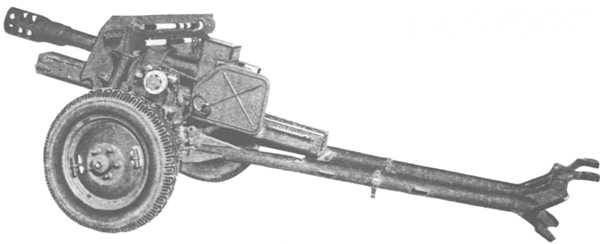
Infantry 75 mm gun 7,5 cm IG 42
The barrel of a 21 caliber gun was equipped with a muzzle brake. In a longer barrel, the high-explosive fragmentation projectile of the le.IG.18 infantry cannon accelerated to 280 m / s and had a maximum firing range of 5150 m. Due to the increased muzzle velocity, the direct firing range increased, which also had a beneficial effect on accuracy.
The carriage with sliding tubular beds was very reminiscent of the carriage of the 7,5 cm Geb.G. mountain weapon. 36 (German 7,5 cm Gebirgsgeschütz 36). The maximum vertical guidance angle was 32 °. And, unlike the le.IG.18, the IG 42 infantry gun did not have howitzer properties. But on the other hand, the guidance sector in the horizontal plane increased to 35 °.
The use of a semi-automatic wedge breechblock allowed the rate of fire to be increased to 20 rds / min. At the same time, the mass of the gun in the firing position was 590 kg (190 kg more than that of the le.IG.18).
Compared to the production volume of the 75mm le.IG.18 guns, relatively few IG 42 guns were produced - approximately 1450 units.
Infantry 75 mm gun 7,5 cm IG 37
The IG 37 gun was a cheaper version of the IG 42. A number of sources say that it was obtained by placing the IG 42 barrel on the carriage of a Soviet 45 mm anti-tank gun of the 1937 model of the year. But there is also information that the carriages of the German 37-mm anti-tank guns 37 cm Pak 3,7/35 were used for the production of the IG 36.
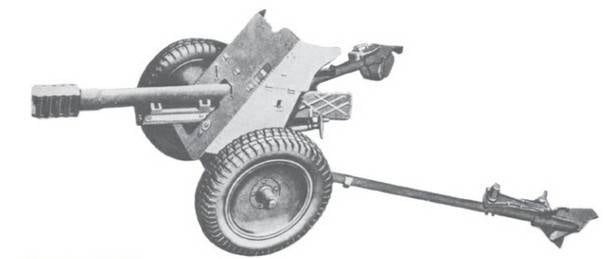
Infantry 75 mm gun 7,5 cm IG 37
The ballistic characteristics and rate of fire of the IG 37 remained the same as that of the IG 42. The use of anti-tank gun carriages did not allow firing with an elevation angle of the barrel of more than 25 °, while the maximum firing range reached 4800 m. The horizontal firing sector was 60 °. Weight in firing position - 530 kg.
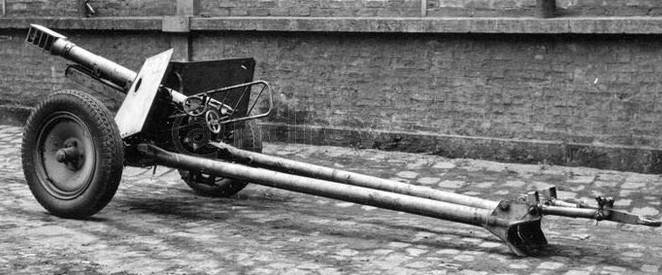
Serial production of the 7,5 cm IG 37 guns began in May 1944, and the first batch of 84 infantry 75 mm IG37 guns was sent to the front in June 1944. In March 1945, the troops had just over 1300 of these guns.
Comparison of the German 7,5 cm IG 37 infantry gun with the Soviet 76,2-mm regimental gun mod. 1943, which was also obtained by imposing a 76,2-mm barrel with weak ballistics on the carriage of a 45-mm anti-tank gun mod. 1942 g.
The Soviet gun fired high-explosive fragmentation projectiles, which were 200 g heavier than the German ones. The gun itself weighed 70 kg more, and the maximum firing range at the same elevation angle was 4200 m. The shutter was a 76,2-mm regimental gun mod. 1943 repeated the bolt of the 76-mm regimental gun mod. 1927 In this connection, the rate of fire did not exceed 12 rds / min.
The ammunition of the Soviet regimental gun included shots not only with high-explosive fragmentation grenades, but also caliber armor-piercing shells, cumulative shells (70-75-mm armor penetration), shrapnel and buckshot.
In turn, the Germans captured more than 2000 of our 76,2-mm regimental guns mod. 1927 and arr. 1943 And set up for them the release of high-explosive fragmentation and cumulative shells.
Subsequently, our troops recaptured about a hundred guns. Due to the higher armor penetration, captured artillery shots of German production with 76,2-mm cumulative grenades were in great demand in the Red Army.
75 mm gun 7,5 cm PaK 97/38
In France and Poland, the Wehrmacht captured several thousand French-made Canon de 75 mle 75 (Mle. 1897) 1897 mm divisional guns and more than 7,5 million rounds for them. The Mle. 1897 was born in 1897. And it became the first serially produced rapid-fire cannon equipped with recoil devices. But by the beginning of World War II, this artillery system was hopelessly outdated.
Mle. 1897 captured in France received the designation 7,5 cm FK231 (f), the Polish ones - 7,5 cm FK97 (p). Initially, the Germans used them in their original form in the "second line" divisions, as well as in coastal defense on the coasts of Norway and France.
Due to the acute shortage of anti-tank guns capable of fighting tanks with anti-cannon armor, the German command at the end of 1941 remembered captured French battalions.
It was difficult to use these outdated divisional guns to combat tanks, even if there was an armor-piercing projectile in the ammunition load due to the small horizontal guidance angle (6 °) allowed by a single-bar carriage. The lack of suspension made it possible to tow at a speed of no more than 12 km / h. In addition, the German military was not satisfied with a weapon adapted only for horse traction.
German designers found a way out: the swinging part of the 75-mm French gun Mle. 1897 was added to the carriage of the German 50 mm anti-tank gun 5,0 cm Pak. 38 with sliding tubular frames and wheel travel, providing the possibility of towing with a mechanized traction. To reduce recoil, the barrel was equipped with a muzzle brake. The Franco-German "hybrid" was put into service under the designation 7,5 cm Pak. 97/38.
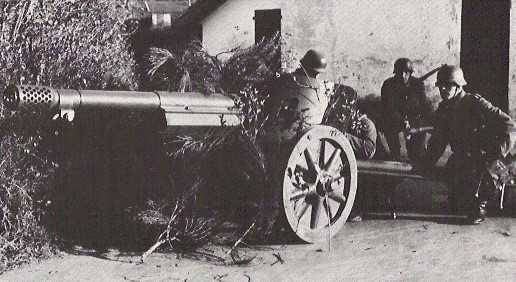
75 mm 7,5 cm Pak gun. 97/38 in firing position
The mass of the gun in the firing position was 1190 kg. Vertical guidance angles from -8 ° to + 25 °, in the horizontal plane –60 °. The 75 mm Pak 97/38 cannon retained the Mle. 1897, which provided a rate of fire of 10-12 rds / min.
The ammunition included unitary shots of German, French and Polish production. The maximum firing range was 9800 m. Trophy high-explosive fragmentation shots were used in their original form and were converted into cumulative ones.
An armor-piercing projectile weighing 6,8 kg left a barrel with a length of 2721 mm with an initial speed of 570 m / s. And at a distance of 100 m at a meeting angle of 60 °, it could penetrate 61 mm armor. Such armor penetration was certainly not enough for a confident fight against the T-34 and KV-1 tanks. In this connection, cumulative shells 7,5 cm Gr. 38/97 Hl / A (f), 7,5 cm Gr. 38/97 Hl / B (f) and cumulative-tracer shells 7,5 cm Gr. 97/38 Hl / C (f). Their initial speed was 450–470 m / s. The effective range of fire at moving targets is up to 500 m. According to German data, cumulative shells normally penetrated 80–90 mm of armor.
Pak production. 97/38 began in February 1942. And it was discontinued in July 1943. Moreover, the last 160 guns were made on a Pak gun carriage. 40, they received the designation Pak. 97/40. Compared to Pak. 97/38, the new artillery system became heavier (1425 against 1270 kg), but the ballistic data remained the same. In just a year and a half of serial production, the 3712 Pak was manufactured. 97/38 and Pak. 97/40.
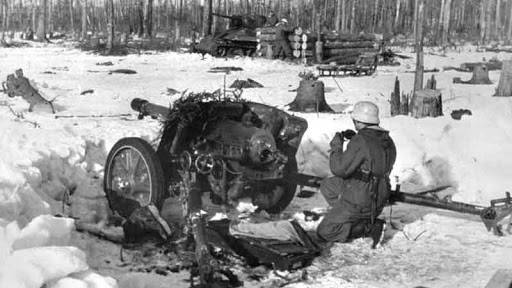
Initially, 75-mm guns entered service with tank destroyer divisions.
But it soon became clear that in the role of an anti-tank gun, the "French-German hybrid" proved to be bad. First of all, this was due to the relatively low initial speed of cumulative projectiles, which negatively affected the range of a direct shot and accuracy of fire. Although German specialists managed to achieve almost the maximum armor penetration rate for a 75-mm cumulative projectile, this was often not enough to confidently overcome the frontal armor of the T-34 tank.
In terms of anti-tank capabilities, the 7,5 cm Pak. The 97/38 was not much superior to the IG 37 and IG 42 infantry cannons, but at the same time its mass in the combat position was much greater. In the summer of 1943, after the start of mass production of the 7,5 cm Pak. 40, most of the Pak guns. 97/38 withdrawn from anti-tank divisions.
The 75-mm "hybrid" guns remaining on the frontline were transferred to the field artillery, and they mainly fired at manpower and light timber-earth fortifications. In addition to the shots captured in France and Poland with 75-mm high-explosive grenades, the Germans fired about 2,8 million such shots.
In addition to the Eastern Front, 75mm guns were deployed in permanent fortified positions on the Atlantic Wall. In addition to the Wehrmacht 7,5 cm Pak. 97/38 were delivered to Romania and Finland. As of March 1, 1945, the Wehrmacht units still had 122 Pak guns. 97/38
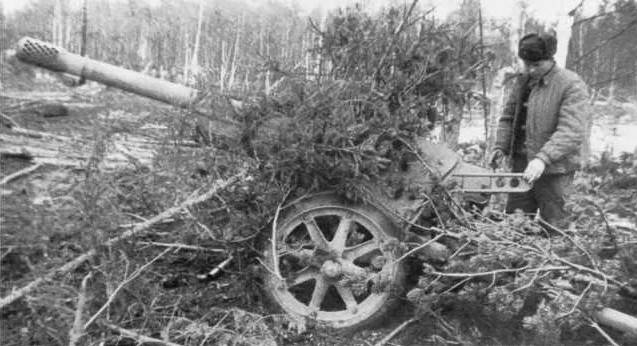
Several dozen 7,5 cm Pak guns. 97/38 were captured by the Red Army.
Captured 75-mm cannons, with ammunition and means of propulsion, were limitedly used as part of the Soviet regimental and divisional artillery. Since there were no firing tables for them, Pak. 97/38 mainly fired at visually observable targets.
150 mm heavy infantry gun 15 cm sIG. 33
In addition to 75-mm guns, German infantry regiments were given 1933-mm guns since 150. In the 1940 regimental artillery company, there were 6 light guns 7,5 cm le.IG.18 and two heavy guns 15 cm sIG. 33 (German 15 cm schweres Infanterie Geschütz 33).
Although the design is 15 cm sIG. 33, conservative technical solutions were used, specialists from Rheinmetall-Borsig AG were able to provide the gun with very good characteristics. The maximum elevation angle was 73º - that is, the gun was a full-fledged howitzer. The range of horizontal guidance angles, despite a simple single-beam carriage, was also quite large - 11,5º to the right and to the left.
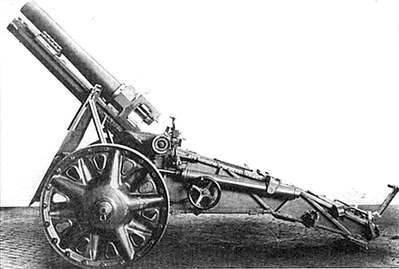
150 mm heavy infantry gun 15 cm sIG. 33
The gun was produced in two versions: for mechanized and horse traction.
In the first case, cast alloy wheels with steel edging had rubber tires. The torsion bar suspension allowed for towing with a mechtyag at a speed of 35 km / h.
In the stowed position, the option for mechanical traction weighed 1825 kg, and the option for horse traction - 1700 kg. Although the gun was light enough for this caliber, at the end of the 30s the Germans made an attempt to lighten the gun. And they partially replaced the steel in the carriage construction with light alloys. After that, the gun became lighter by about 150 kg.
However, due to the shortage of light metals after the outbreak of World War II, the production of cast carriages made of aluminum alloy was discontinued.
The standard sIG towing vehicle. 33 in the motorized and tank divisions was the Sd.Kfz. eleven.
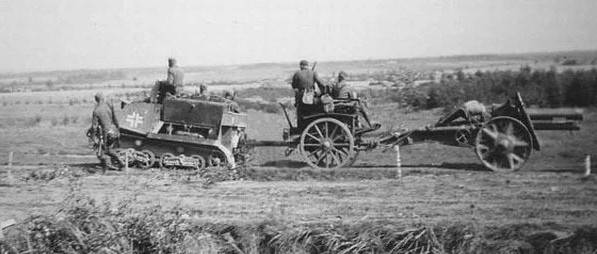
Also, trophy tractors were often used: the French Unic P107 and the Soviet Komsomolets. Most often, captured tractors were used to tow guns, originally created for horse traction.
The gun fired with separate-case loading shots. And it was equipped with a piston valve. The calculation, consisting of seven people, could provide firing with a rate of fire of up to 4 rds / min.
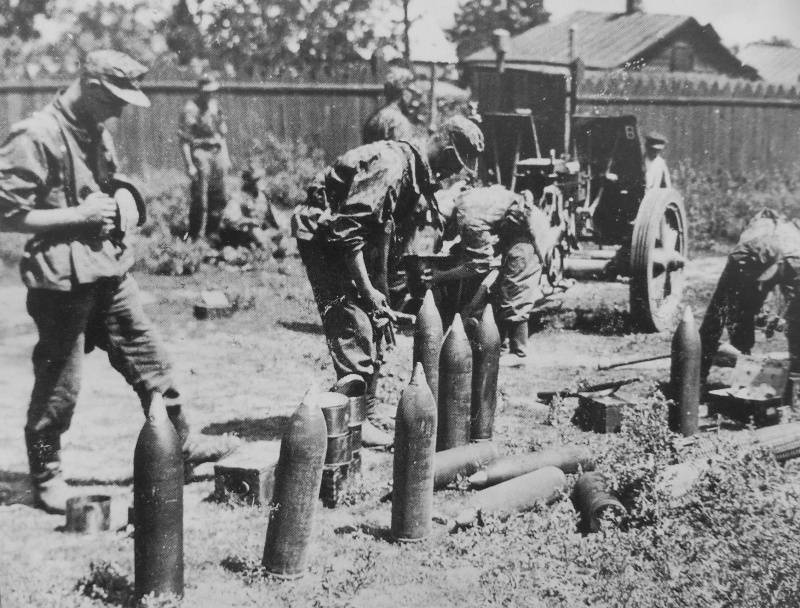
Cannon 15 cm sIG. 33 had a fairly wide range of ammunition. But the main ammunition was considered to be high-explosive fragmentation shots with separate cartridge case loading.
High-explosive fragmentation grenades 15 cm IGr. 33 and 15 cm IGr. 38 weighed 38 kg and contained 7,8–8,3 kg of TNT or amatol. When the fuse was installed for instant action, lethal fragments flew 20 m forward, 40–45 m to the side and 5 meters back.
The high-explosive action of the shells was more than enough to destroy light field fortifications. The shells overcame cover up to three meters thick from the ground and logs.
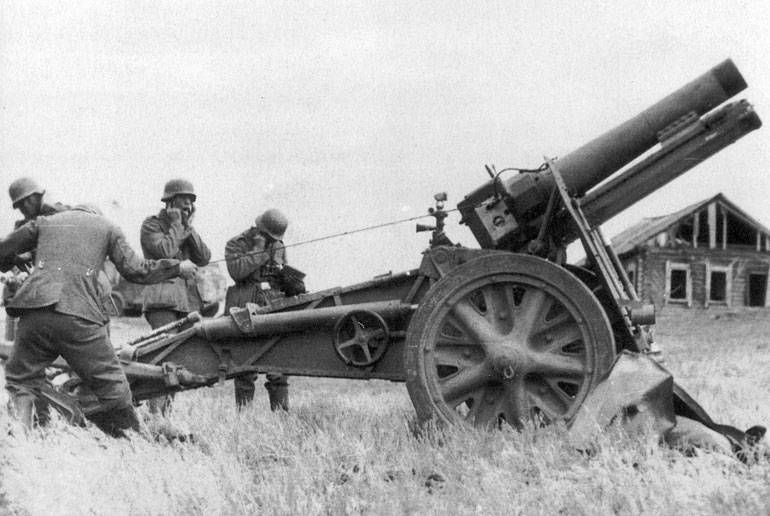
The crew fires from a 150 mm heavy infantry gun 15 cm sIG. 33
Brass or steel sleeves, in addition to the main powder charge, contained up to six weighted bundles of diglycol or nitroglycerin powder. When firing projectiles 15 cm IGr. 33 and 15 cm IGr. 38 on the 1st (minimum) charge, the initial speed was 125 m / s, the maximum firing range was 1475 m. At the 6th (maximum) charge, it was 240 m / s and 4700 m, respectively.
Also for shooting the 15 cm sIG. 33 used 15 cm IGr38 Nb smoke shells weighing 40 kg. Such a projectile created a cloud of smoke with a diameter of about 50 m, the average smoke time was 40 s.
Incendiary shell 15 cm IGr. 38 Br was loaded with thermite segments, which were scattered over the terrain with an expelling powder charge.
At the end of 1941, cumulative 15 cm IGr shells began to enter the troops. 39 HL / A with 160 mm normal armor resistance. With a mass of 24,6 kg, the projectile was loaded with 4,14 kg of RDX. The tabular firing range of such a projectile was 1800 m, the effective range was no more than 400 m.
After the Stielgranate 1942 over-caliber feathered mines, the sIG. 42 could be used as a heavy mortar.
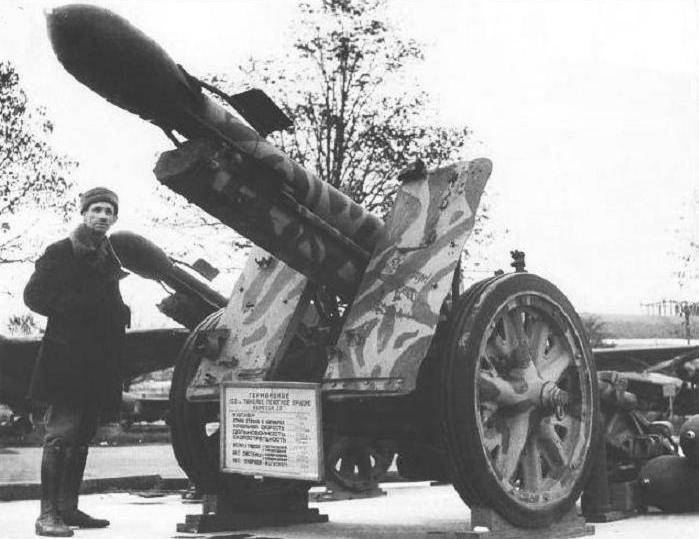
The 300 mm ammunition weighing 90 kg contained 54 kg of ammatol. With an initial speed of 105 m / s, the maximum firing range slightly exceeded 1000 m.The mine, equipped with an instant fuse, was used to clear minefields and barbed wire, as well as to destroy long-term fortifications.
For comparison, the 210 mm 21 cm Gr. 18 Stg, designed for shooting from mortars 21 cm Gr. 18, weighed 113 kg and contained 17,35 kg of TNT. In terms of its destructive effect, the Stielgranate 42 over-caliber mine roughly corresponded to the Soviet OFAB-100 aerial bomb, the explosion of which formed a crater with a diameter of 5 m and a depth of 1,7 m.
In September 1939, the Wehrmacht had over 400 heavy infantry guns. In total, approximately 4600 guns were fired. By June 1, 1941, the Wehrmacht had 867 heavy infantry guns and 1264 thousand shells for them. In March 1945, 1539 heavy infantry guns 15 cm sIG were in service. 33.
The experience of combat use has demonstrated the high combat effectiveness of 150-mm infantry guns. At the same time, the relatively large weight made it difficult to roll onto the battlefield by the forces of calculation.
The creation of a self-propelled version was a completely logical solution to increase mobility. The first such self-propelled gun Sturmpanzer I on the chassis of the light tank Pz.Kpfw. I Ausf. B appeared in January 1940. Subsequently, the Sturmpanzer II self-propelled guns (on the Pz.Kpfw. II chassis) and StuIG were armed with 150-mm infantry guns. 33B (based on Pz. Kpfw. III). Since 1943, companies of infantry guns in tank and panzergrenadier divisions were rearmed with Grille self-propelled guns (on the Pz.Kpfw. 38 (t) chassis) - six units per company. At the same time, all towed weapons - both light and heavy - were withdrawn from these companies.
The use of 150mm guns in German infantry regiments was an unprecedented step. During the Second World War, no other army had such powerful artillery systems in the infantry units. The firepower of these guns gave the German infantry regiments a tangible advantage on the battlefield and made it possible to independently solve tasks for which divisional artillery had to be involved in the armies of other countries.
The regiment commander had the opportunity to use his "own" artillery to engage targets inaccessible to machine guns and mortars. Platoons of light 75-mm infantry guns could be attached to battalions, heavy 150-mm guns were always used at the regimental level.
Infantry guns were placed in close proximity to the forward edge, which, when conducting offensive operations, reduced the reaction time and made it possible to suppress uncovered targets as quickly as possible. At the same time, the 15 cm sIG. 33 had a relatively short firing range and could not effectively conduct counter-battery combat, as a result of which they often suffered losses.
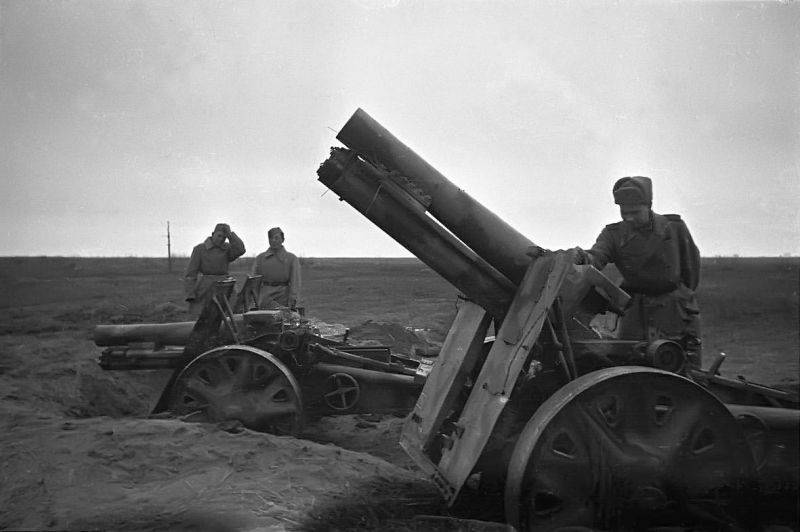
In case of a rapid enemy advance, evacuate the 150mm sIG. 33 was more difficult than the 75-mm le.IG.18, as a result of which they were often captured by soldiers of the Red Army.
The Red Army managed to capture several hundred 150mm sIG guns. 33 and a significant amount of ammunition for them. Initially, they were used in an unorganized manner, as a supernumerary means of fire reinforcement of regiments and divisions. At the same time, as in the case of the 75-mm light infantry cannons, the fire was fired only at visually observed targets. This was due to the fact that mounted shooting from heavy infantry guns required a good knowledge of the characteristics of charges, the properties of ammunition and their markings.
At the end of 1942, captured 15 cm sIG. 33 began to be sent to the mixed divisions of artillery regiments attached to the rifle divisions. Where they replaced 122mm howitzers. To enable the full use of 150-mm guns, firing tables and operating instructions were issued, and the calculations underwent the necessary training.
However, such a replacement was not entirely equivalent. The power of the 150-mm projectile was, of course, higher. But in terms of firing range, the 150-mm heavy infantry gun was inferior not only to the new 122-mm M-30 howitzer, but also to the modernized 122-mm mod. 1909/37 and 122 mm arr. 1910/30 g.
Despite the low firing range, 150-mm guns of German production were used by the Red Army until the last days of the war. Their best qualities were manifested during offensive operations, in those cases when it was required to suppress the well-fortified centers of enemy resistance.
Apparently, captured SPGs with 15 cm sIG guns. 33 also found application in the Red Army.
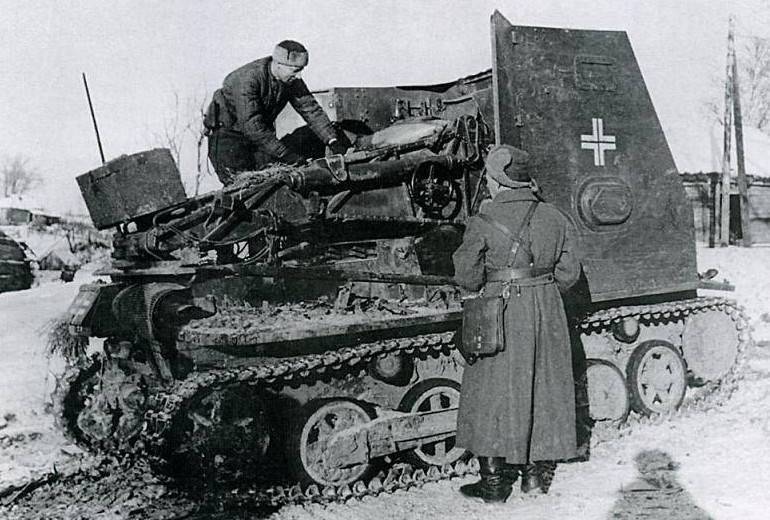
The Yugoslav partisans captured approximately two dozen sIG 1944mm infantry guns in 150. 33. And they actively used them in hostilities against the Germans and Croats.
In the post-war period, German guns 15 cm sIG. 33 were in service in a number of Eastern European countries until the mid-1950s. According to some reports, 150-mm infantry guns could be used by Chinese people's volunteers during the hostilities on the Korean Peninsula.
Anyway, one 15 cm sIG gun. 33 is on display at the Beijing Military Museum of the Chinese Revolution.
To be continued ...
- Linnik Sergey
- Use of captured German pistols in the USSR
The use of German captured submachine guns in the USSR
The use of captured German rifles and machine guns in the USSR
The use of captured German machine guns in the USSR
The use of captured German tanks and self-propelled guns in the initial period of the Great Patriotic War
Use of captured "Panthers" and "Tigers" at the final stage of the Great Patriotic War
The use of captured German self-propelled guns in the Red Army at the final stage of World War II
The use of German armored vehicles in the postwar period
The use of captured German mortars and multiple launch rocket systems
Use of captured German anti-tank guns
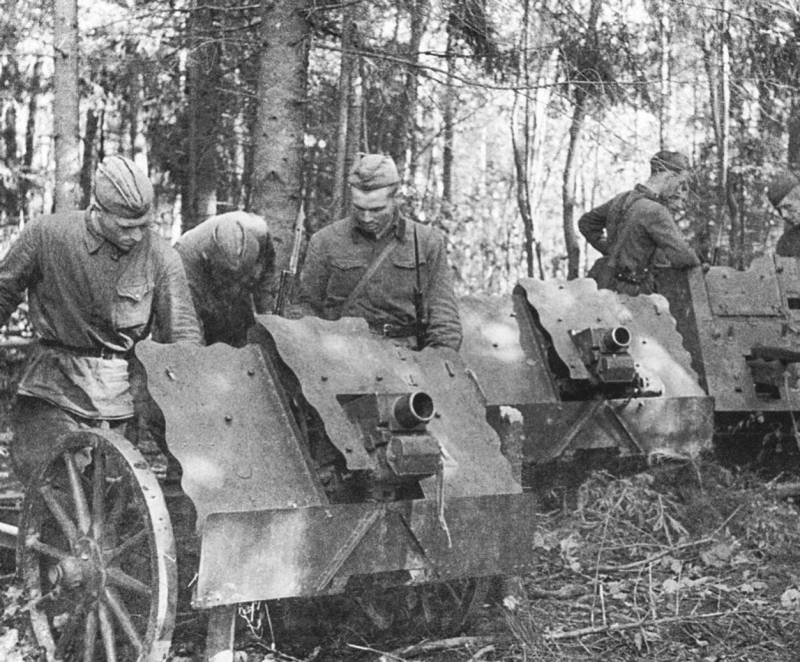
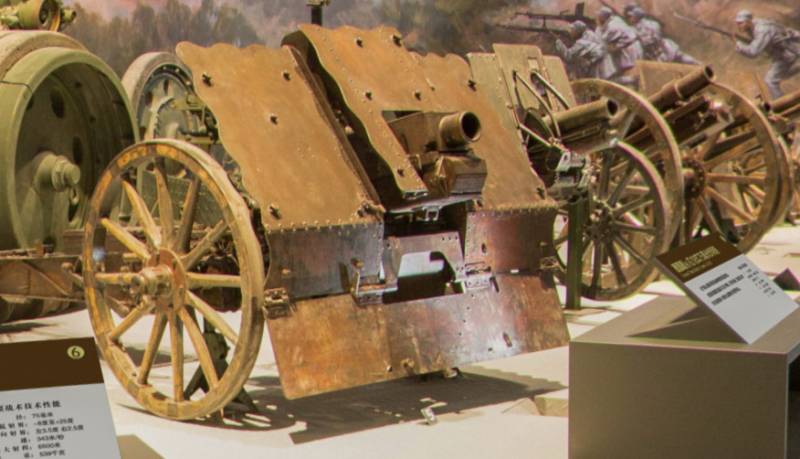
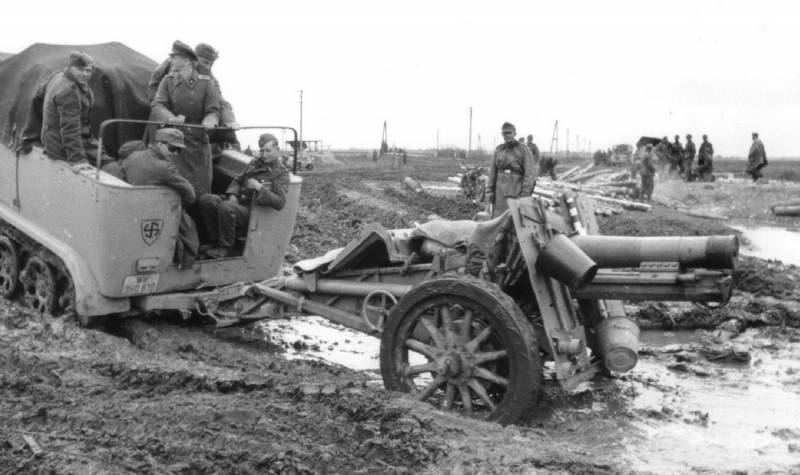
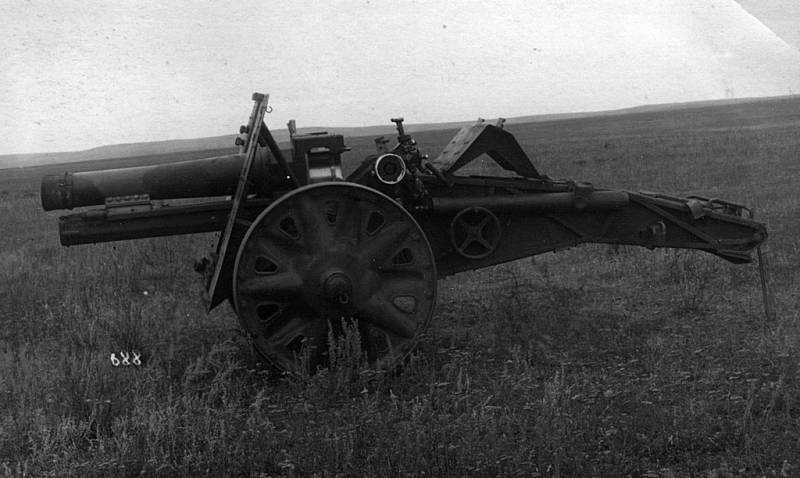
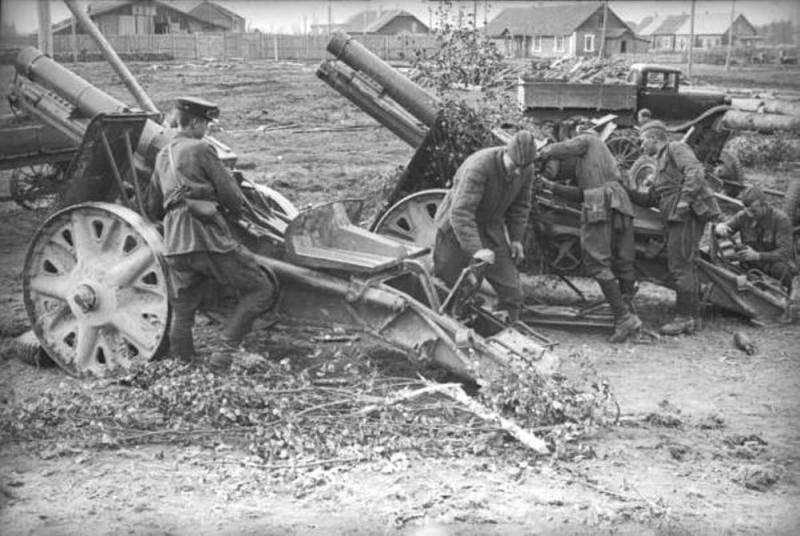
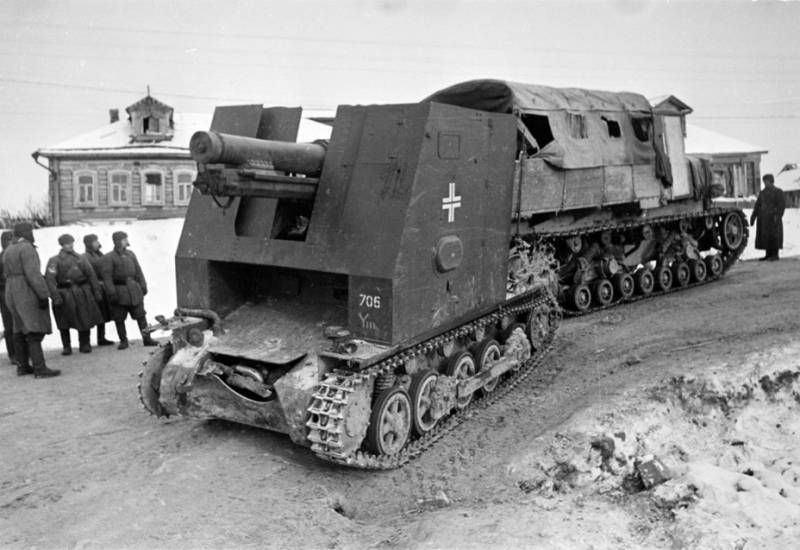
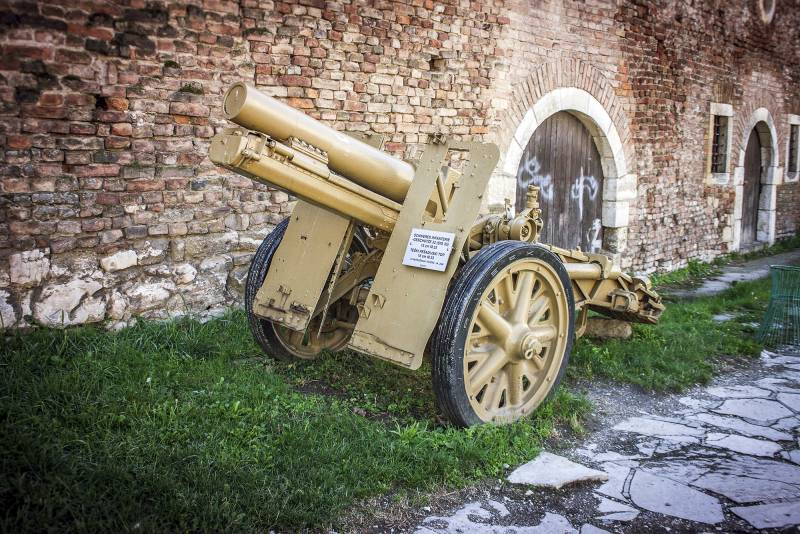
Information